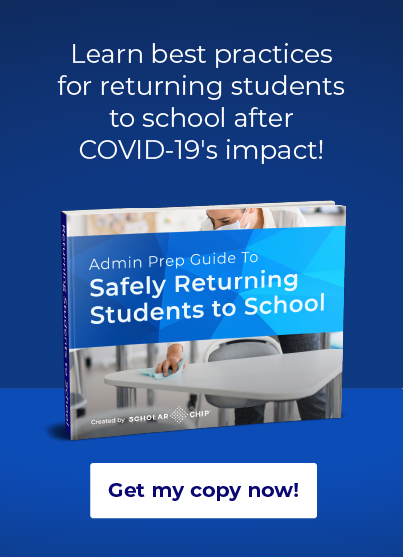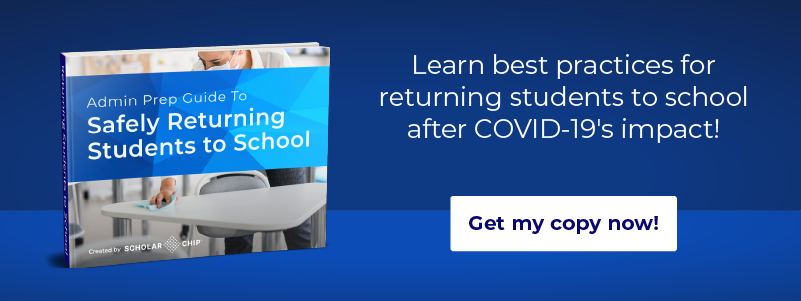Contact tracing has been and will continue to be one of the most effective methods for flattening the curve of spreading COVID-19. We hear about this intervention method frequently, but what does it actually entail?
Contact tracing in schools involves a trained team that interviews individuals who have COVID-19 to see where they’ve gone and with whom they’ve been in contact. Then, the team notifies all the individuals whom this person has contacted and warns them about their increased risk of contracting the disease.
According to the Yale School of Public Health, “Contact tracing is labor-intensive and often emotionally draining. It requires phone calls (lots of them), strong interviewing skills, diplomacy and the ability to ask the right questions. Volunteers also need to stay abreast of the latest guidance from the Centers for Disease Control and Prevention about symptoms and recommendations to self-isolate.”
Contact tracing in schools is not a new phenomenon. For example, it was often used in the past to track tuberculosis cases. All the best practices for monitoring the spread of other types of diseases can also be used for COVID-19.
Creating a contact tracing team is a vital step for returning a certain amount of normalcy to K-12 schools. In this article, we discuss three necessary steps for developing a contact tracing program at your school.
Appoint a Leader
Contact tracing is a complex process, so someone needs to be in charge of training the team, keeping track of infected students or staff, and contacting those who may have also been exposed. You’ll need to find someone with relevant experience to handle these tasks.
Train a Contact Team
You likely don’t have enough medical staff at your school to have them handle contact tracing on their own. Instead, your supervisor will need to find and train a group of volunteers to undertake the necessary protocols.
What does this role involve?
Primarily, the contact tracing team will interview students, faculty, or staff diagnosed with COVID-19 to see when and where they interacted with others. Contact tracers are particularly interested in contacts who were closer than six feet in distance and interacted for longer than ten minutes.
Then, the contact tracing team must call up potentially infected parties or their parents and inform them of the possible contagion. This is a delicate process, as some contacted parties will be grateful, while others will be angry.
The Centers for Disease Control (CDC) created a contact tracing training guide for supervisors. Once interested contact tracers have finished the training, they’ll be ready to be part of the contact tracing team.
Use Technology That Provides More Information about Infection Likelihood
While interviews have been standard procedure for garnering more information about whom a person infected with COVID-19 connected with, interviews are only part of the picture. If you’re talking with students, for instance, you may discover that their recollections of where they went and when are hazy at best.
That’s why it’s so important to use technology to simplify contact tracing. According to the Johns Hopkins School of Public Health, “[T]echnology really helps when public health workers need to look for contacts in places that may be more crowded, or when the identified person doesn’t know the people they came into contact with. Say you go to the grocery store, and you’ve been within 6 feet of a number of people but you don’t know who those people are.”
This is certainly true in schools. Students and faculty may not be able to accurately identify whom they were in a room with or how long they were there. ScholarChip tools can eliminate this guesswork for contact tracers.
If students and staff use the ScholarChip One Card and Smart Card Readers, the contact tracing team will know where everyone is at all times they are on campus. At the beginning of the year, each student and staff member can be issued a unique ID card that they must use to open the doors they have permission to enter.
By tapping the card each time they enter a new room or area, students and staff are creating a record of where they go while on campus.
Then, contact tracers can use this information to simplify their work. If a student is infected with COVID-19, for instance, the team can see what classes that the student attended, as well as the other students who also checked into that classroom that day. This is particularly important, as attendance may fluctuate throughout the year.
While interviews are important for contact tracers, technology that might have been more focused on promoting accountability and attendance can serve a new purpose during the pandemic.
Conclusion
In a survey, nearly 6,000 Philadelphia teachers noted that they would be hesitant to return to schools that didn’t have contact tracing protocols in place. Developing thorough, technology-aided contact tracing in schools not only will prevent the spread of COVID-19 but also put stakeholders’ minds at ease.
ScholarChip offers unique holistic school safety services based on CDC guidelines to help schools reopen amidst growing health concerns. Through our advanced technology, built and designed for the K-12 environment, schools can identify risk and mitigate the spread of infection. Our solution includes fever screening, visitor questionnaires, symptom and vaccine tracking, in-school contact tracing, alerts, and notifications. Learn more about our advanced COVID-19 solutions or request a reopening strategy session today!


